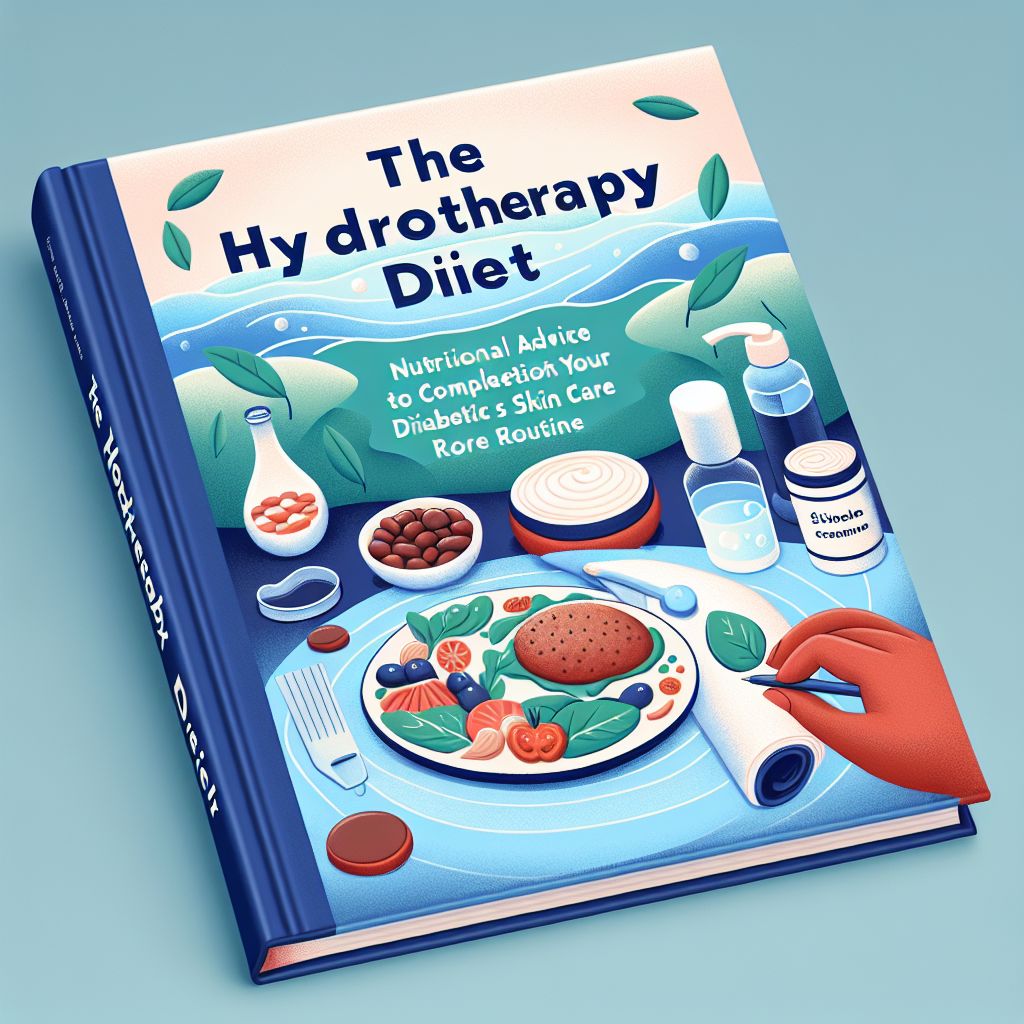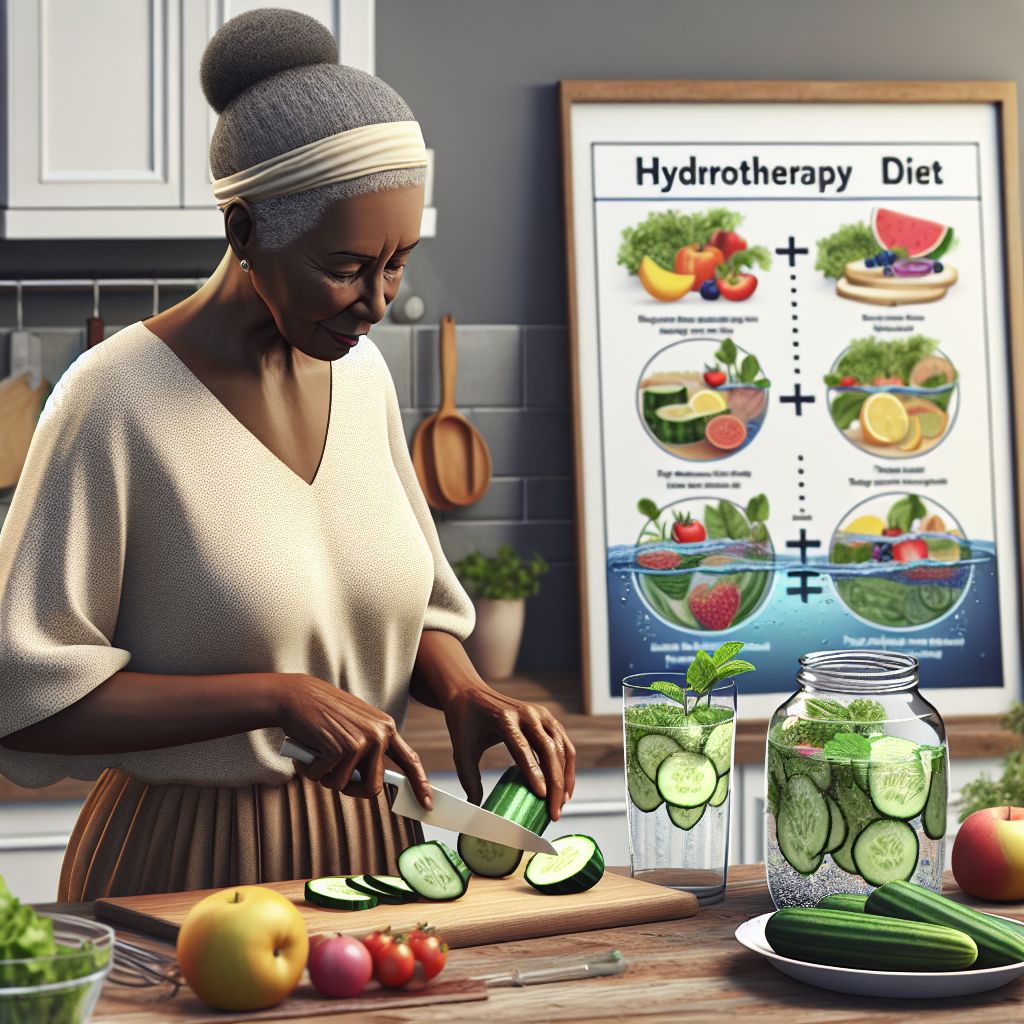
-
Understanding the link between diabetes, diet, and skin health is crucial for effective management.
-
Incorporating anti-inflammatory foods into your diet can improve skin quality and overall diabetes control.
-
Hydrotherapy can complement dietary efforts, potentially enhancing skin health for those with diabetes.
-
Starting your day with a hydrotherapy routine can set a positive tone for healthy choices throughout the day.
-
Monitoring your skin’s response to dietary and hydrotherapy interventions helps tailor your personal care plan.
The Synergy of Nutrition and Skin Health in Diabetes
When you’re living with diabetes, taking care of your skin is just as important as monitoring your blood sugar levels. Your skin, the largest organ of your body, can reflect your inner health, and it’s often one of the first places where diabetes-related complications can show up. But here’s some good news: a thoughtful diet, combined with the soothing practice of hydrotherapy, can do wonders for your skin and your overall diabetes management.
Why What You Eat Matters for Your Skin
Most importantly, what you eat has a direct impact on your blood sugar levels, and this in turn affects your skin. High blood sugar can lead to dry, itchy skin and slow wound healing. But by choosing the right foods, you can help keep your skin supple, healthy, and less prone to infections. It’s all about balance, variety, and moderation.
Key Nutrients to Support Diabetic Skin
Let’s break down the nutrients that are essential for maintaining healthy skin when you have diabetes:
-
Hydration: Drinking plenty of water helps to keep your skin hydrated from the inside out.
-
Omega-3 fatty acids: Found in fish like salmon and in flaxseeds, they can help reduce inflammation and improve skin barrier function.
-
Vitamins A, C, and E: These vitamins support skin repair and can be found in colorful fruits and vegetables.
-
Zinc: This mineral, present in nuts and seeds, aids in wound healing and supports the immune system.
By incorporating these nutrients into your daily meals, you’re not just eating for taste; you’re also feeding your skin the nourishment it needs.
Carving a Path to Improved Skin Through Diet

Adopting an anti-inflammatory diet is a powerful way to combat the skin issues associated with diabetes. Inflammation can exacerbate skin problems, but the right foods can help dial down the heat.
The Anti-Inflammatory Diet for Diabetic Skin
An anti-inflammatory diet focuses on whole, nutrient-dense foods and avoids those that can trigger inflammation. This means filling your plate with a rainbow of fruits and vegetables, choosing whole grains, and selecting lean proteins. It also means being mindful of the types of fats you consume, emphasizing those that are heart-healthy and skin-friendly.
Because inflammation can be a silent aggravator, especially for those with diabetes, eating foods that are known for their anti-inflammatory properties is essential. Here’s a simple guide:
-
Include berries, nuts, and leafy greens in your diet regularly.
-
Opt for whole grains like brown rice and quinoa instead of refined carbs.
-
Choose lean proteins like chicken, turkey, and fish over red meats.
-
Use olive oil for cooking instead of butter or other saturated fats.
Specific Foods to Focus On
Here are some specific foods that can help improve the health of your skin:
-
Blueberries: Packed with antioxidants, they can help fight the free radicals that damage skin cells.
-
Tomatoes: Rich in lycopene, they protect your skin from sun damage and can improve skin texture.
-
Walnuts: A great source of omega-3 fatty acids, which can help reduce skin inflammation.
-
Carrots: Loaded with vitamin A, they’re essential for skin cell regeneration.
These foods are not just skin-friendly, but they also help in keeping your blood sugar levels in check, making them perfect for a diabetes-focused diet.
Understanding Hydrotherapy and Its Benefits
Hydrotherapy, the use of water for therapeutic purposes, is an ancient practice that can be especially beneficial for individuals with diabetes. Immersing in water can improve circulation, reduce stress, and promote relaxation. For those with diabetes, improved circulation can aid in better blood sugar control and promote the healing of skin irritations and wounds, which are common complications of the condition.
Warm water therapy, for instance, can help open up blood vessels, enhancing blood flow to the skin. This can be particularly soothing for diabetic neuropathy, where nerve damage causes pain and sensitivity. Moreover, the buoyancy of water can reduce pressure on the joints and muscles, providing a gentle environment for exercise that can aid in overall diabetes management.
Integrating Hydrotherapy with Dietary Choices
When you pair hydrotherapy with a diet rich in skin-nourishing nutrients, you create a powerful duo for diabetes care. The relaxation from hydrotherapy can also reduce stress-induced cravings for unhealthy foods, making it easier to stick to your dietary goals. After a hydrotherapy session, your body might be more receptive to the vitamins and minerals from your meals, as your circulation has improved.
For the best results, try to time your hydrotherapy sessions around your meals. A warm bath or a swim can be an excellent way to wind down after a balanced meal. Not only does this help with digestion, but it also ensures that the nutrients you’ve consumed are efficiently distributed throughout your body, including your skin.
Remember, consistency is key. Making hydrotherapy a regular part of your routine can help you maintain steady blood sugar levels and support your skin’s health. This doesn’t mean you need access to a fancy spa; even a warm bath at home can be effective.
Let’s not forget hydration. Drinking water is a form of internal hydrotherapy. It flushes out toxins from your body and keeps your skin cells plump and full. So, drink up and combine it with external hydrotherapy for a full-circle approach to hydration.
Practical Tips for Implementing a Hydrotherapy Diet

Now that we know the benefits of combining hydrotherapy with a nutritious diet, let’s look at some practical tips to incorporate this synergy into your daily routine.
Starting Your Day with Hydrotherapy: Morning Routines
Begin your day with a warm shower or bath to stimulate blood flow and prepare your body for the day ahead. This can help you feel more alert and ready to make healthy food choices. Plus, it’s a moment of self-care that sets a positive tone for the day.
Balancing Meals and Hydrotherapy Sessions
To get the most out of your hydrotherapy diet, balance is crucial. Here’s how you can align your meals and hydrotherapy sessions:
-
Have a light, nutritious meal about an hour before your hydrotherapy session to ensure you have enough energy without feeling too full.
-
Choose snacks that are high in protein and healthy fats after your session to help rebuild muscles and keep your skin nourished.
-
Drink plenty of water before, during, and after hydrotherapy to stay hydrated and help your body absorb the nutrients from your meals.
By following these tips, you can create a harmonious relationship between your diet and hydrotherapy routine, optimizing your skin health and diabetes management.
Frequently Asked Questions
Let’s address some common questions you might have about the hydrotherapy diet and diabetic skin care.
1. How Often Should I Practice Hydrotherapy?
To reap the full benefits of hydrotherapy, consistency is essential. Aim for 2-3 sessions a week to help manage your diabetes and support skin health. However, even simple daily routines like a warm morning shower can contribute positively to your skin’s condition and overall well-being. Listen to your body and adjust the frequency of your hydrotherapy sessions according to how you feel and the advice of your healthcare provider.
2. Can Hydrotherapy Alone Improve My Skin Condition?
Hydrotherapy is a powerful tool, but it’s not a standalone solution. It works best in conjunction with a balanced diet rich in skin-supporting nutrients and proper diabetes management. Think of hydrotherapy as part of a holistic approach to your health, enhancing the effects of the good choices you’re making on your plate.
3. Are There Any Risks to a Hydrotherapy Diet for Diabetics?
While hydrotherapy is generally safe, it’s important to be cautious if you have diabetes-related complications such as neuropathy or skin infections. Always check with your healthcare provider before starting hydrotherapy, especially if you have open wounds or reduced sensation in your feet and legs. They can guide you on safe practices and help you avoid any potential risks.
4. How Can I Track the Effects of a Hydrotherapy Diet on My Skin?
Keep a detailed journal of your dietary intake, hydrotherapy sessions, and skin condition. Note any changes, improvements, or concerns. This record can be invaluable for your healthcare team to understand the impact of your hydrotherapy diet and to make any necessary adjustments. Additionally, take regular photos of your skin to visually track progress over time.
-
Hydration is key: Drink plenty of water and consider water-rich foods to maintain skin moisture from the inside out.
-
Focus on omega-3s: Include sources like fish, flaxseeds, and walnuts to help reduce skin inflammation.
-
Load up on antioxidants: Eat a variety of colorful fruits and vegetables to protect your skin cells.
-
Get your vitamins: Vitamins A, C, and E are crucial for skin repair and can be found in natural food sources.
-
Remember zinc: This mineral supports wound healing and immune function, essential for diabetics.
By integrating these nutritional strategies with the benefits of hydrotherapy, you’re setting the stage for healthier skin and better diabetes control. This holistic approach to your health can lead to significant improvements, not just in your skin, but in your overall quality of life.



Leave a Reply